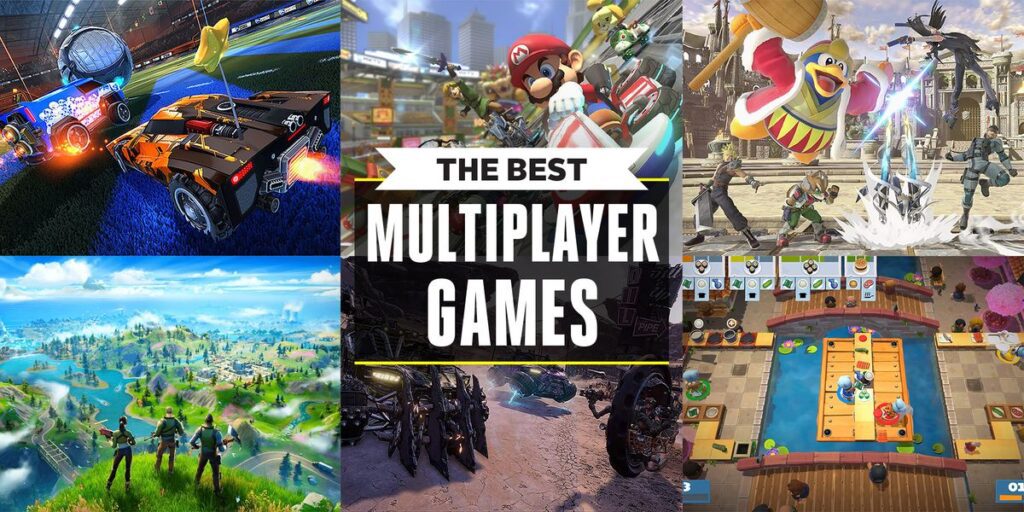Multiplayer gaming has evolved from LAN parties to cloud gaming. LAN gaming required gamers to gather in the same room to play games together, whereas online gaming allowed gamers to play with others from around the world, forming communities and enabling massive multiplayer games. Cloud gaming allows for high-quality gaming experiences to players worldwide as games are streamed from remote servers to low-end devices, eliminating the need for expensive hardware. Nevertheless, it also poses challenges, such as requiring a stable internet connection and raising concerns about data privacy and ownership. As technology advances, it will be exciting to see what the future of multiplayer gaming holds.
The Evolution of Multiplayer Gaming: From LAN to Cloud Gaming
Multiplayer gaming has come a long way since the early days of LAN parties, where gamers would gather in the same room to play games together. With the advent of the internet and more advanced technology, online multiplayer games have become more immersive and accessible than ever before. But how did we get here? Let’s take a look at the evolution of multiplayer gaming, from LAN to cloud gaming.
LAN Gaming
In the early days of multiplayer gaming, LAN parties were the norm. Gamers would bring their PCs or consoles to a designated location and connect them together in a local area network to play together. Games like Doom, Quake, and Starcraft were popular LAN games in the 1990s.
LAN gaming had its advantages. It allowed gamers to play together with low latency and high speeds, with no worries about internet connectivity or lag. It also fostered a sense of community, with gamers physically gathering together to play and socialize.
However, LAN gaming also had its drawbacks. It required gamers to be in the same physical location, which could be inconvenient or impractical. It also limited the pool of players to those who could attend the LAN party.
Online Gaming
The rise of the internet changed the face of gaming forever. With online gaming, gamers could play with others from all around the world, without leaving their homes. Games like Ultima Online and Everquest were early pioneers of online gaming in the late 1990s.
Online gaming opened up a whole new world of possibilities. It allowed for massive multiplayer games with hundreds or even thousands of players. It enabled gamers to join clans or guilds, and form communities with like-minded players. And it allowed for persistent worlds, where the game continued even when the player logged off.
However, online gaming also had its drawbacks. It required a stable internet connection, which not everyone had access to in the early days. It also brought with it new problems, like griefing and hacking, which could ruin the experience for others.
Cloud Gaming
Cloud gaming is the newest evolution of multiplayer gaming. It takes online gaming to the next level, by leveraging the power of the cloud to deliver high-quality gaming experiences to players around the world. Games like Fortnite and Apex Legends are popular examples of cloud gaming.
With cloud gaming, gamers don’t need a powerful gaming PC or console to play. Instead, the game is streamed from remote servers to the player’s device, allowing them to play high-end games on low-end devices. It also eliminates the need to download and install games, as they are streamed directly to the player’s device.
Cloud gaming has many advantages. It allows for cross-platform play, meaning that gamers on different devices can play together. It also eliminates the need for expensive hardware, making gaming more accessible to a wider audience. And it allows for more advanced features, like real-time ray tracing and AI-powered NPCs.
However, cloud gaming also has its challenges. It requires a strong and stable internet connection, with low latency and high bandwidth. It also raises concerns about data privacy and ownership, as gamers are essentially renting access to the game rather than owning a physical copy.
Conclusion
Multiplayer gaming has come a long way since the early days of LAN parties. We’ve seen the rise of online gaming and the birth of cloud gaming, both of which have brought new possibilities and challenges to the world of gaming. As technology continues to advance, it will be interesting to see where multiplayer gaming goes next.
